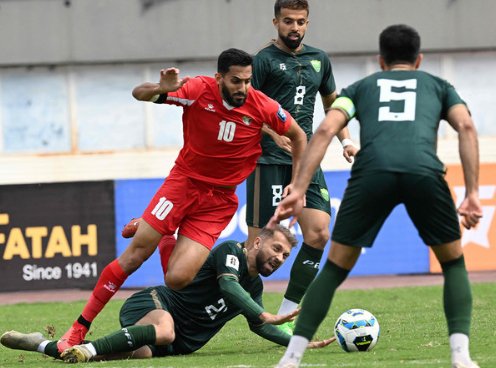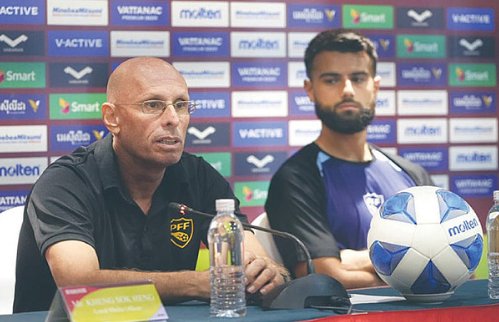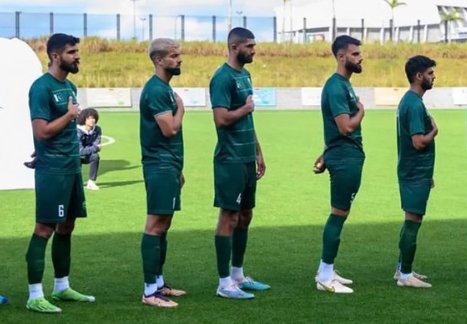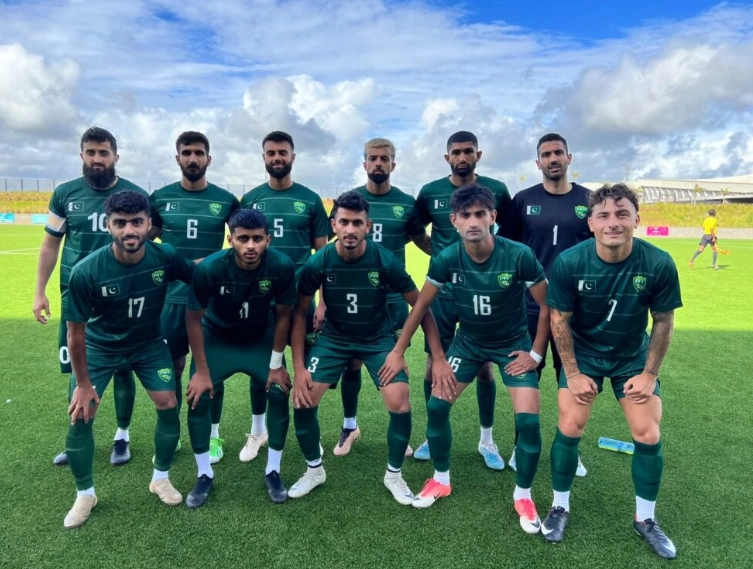Can Pakistan Qualify for the FIFA World Cup 2026? Complete Analysis
With more Asian spots now available, the big question remains: Can Pakistan Qualify for the FIFA World Cup 2026? The 2026 FIFA World Cup symbolizes Pakistan’s best chance in decades to enter football’s grandest stage. Built as a bigger event with up to 48 teams, As someone who has followed Pakistani football for years and watched it in slow decline, I believe the newly expanded format promises a real chance, but we have to move fast and smart for this one.
Let me take you through the essential facts regarding Pakistan’s dream of the World Cup, our present status, who is in the way today, and what needs to happen for this dream to be realized.
1. Pakistan’s Current FIFA Ranking and Recent Performance
1.1 FIFA World Ranking Position and Historical Trends
In terms of current standing in FIFA World Rankings, Pakistan is at 193rd position among the 211 member nations. This puts them in the bottom 20 teams globally, which honestly hurts to write as a football fan. Looking at the past decade, their ranking has been stuck in this range, fluctuating between 190-200 with occasional dips even lower.
The ranking reflects Pakistans limited international activity. they play maybe 4-6 international matches per year, compared to top Asian teams, which play 12-: 15matches annually. Every time they miss opportunities to play, their ranking points decrease due to inactivity. It’s like trying to stay fit by exercising once a month-it just doesn’t work.
What’s particularly painful is the drop from ranking around 185 and 2015 to now. The statistics show that, while many nations are improving, Pakistan are not going forward and, perhaps, even backward.
1.2 Performance in Recent International Matches
The recent international record of Pakistan makes for extremely rough reading. Pakistan has played only 8 international matches in the last 24 months and has won just two of these matches. Pakistan scores about just under 0.7 goals per game while conceding an average of 1.3 goals a match.

Their win percentage is around 35% – at best – even against teams ranked in the tier 180-200. This implies that they are not just uncompetitive compared to stronger Asian rivals but also in their tier.
Ever been concerned with their records in defense? Tthey have managed to keep a clean sheet in only 2 of their last 10 international matches. This is highly concerning for a team striving to qualify for the World Cup.
1.3 Comparison with Other Asian Football Nations
The gap that separates them from the Asian nations that qualify for the World Cup is enormous. Japan (23rd), South Korea (26th), and Australia (27th) are all ranked well above them by more than 160 ranks. Even the more traditional Asian giants, such as Iran (21st) or Saudi Arabia (56th), have very different leagues altogether.
Scariest of all is how they stack up against these other countries in South Asia: India ranks somewhere around the 100th mark, closer to 90 places ahead of Pakistan. Their two other immediate competitors, Bangladesh and Sri Lanka, stand taller than them.
The only comparison might even be Afghanistan (150th) or Nepal (175th). These small countries have demonstrated progressive growth more reliably than Pakistan over recent years. That says just how far behind South Asia is in improving football development in Pakistan.
2. Understanding the FIFA World Cup 2026 Qualification Process
2.1 Expanded Tournament Format with New Possibilities
The addition of 16 extra spots around the world truly changes the game for countries like Pakistan. For Asia alone, previously there were 4.5 qualification spots among 32; now, it will jump to 8 spots, an increase by nearly a factor of two.
Mathematically, that best improves Pakistan’s chances to qualify from about 1-in-12 among Asian entrants to around 1-in-6. But, these still hold a challenging aspect, though not as much as in years past. Now, it can be said that teams ranked between 15 and 20 in Asia are more likely to think about qualifying.
Plus, when it comes to qualification, the whole event is not going to be too cruel. One unfortunate result will no longer be the death knell for the campaign; there is now room to correct and grow throughout the qualifying rounds.
2.2 AFC Asian Qualifiers Structure and Requirements:
AFC has a qualification involving four rounds, and because Pakistan is very low on the rankings, they have to start from step one. The first round involves the lowest-ranked teams playing knockout matches just to be able to reach the main qualifying groups.
With current rankings, Pakistan would almost certainly meet in the first round against teams like Bangladesh, Sri Lanka, or even Laos. Matches that must be won, without margin of error: lose here, and their World Cup dream ends before it begins.
If they make it through, the second round consists of 36 teams split into nine groups of four. Only group winners and the best runners-up will advance to the next stage. Given their ranking, they’d be unseeded and face at least one significantly stronger opponent in their group.
Things get tough in the third round. There are 18 remaining teams split into three groups of six, but the two top teams from each group advance to the final round. These are likely the established Asian powers they’ll have to deal with.
2.3 Timeline and Key Qualification Milestones
This qualification process is scheduled to start in late 2023 or early 2024 when the first-round matches are played. Pakistan will have less than 18 months to prepare, which frankly isn’t very long for the improvements they need.
The all-important milestone is to survive the first round by mid-2024. If they can’t beat similarly ranked opponents, there’s no point discussing later stages. The second round runs through 2024 and early 2025, meaning they need to be competitive immediately, not in two or three years.
The final qualification spots will be decided by late 2025, leaving only six months for the World Cup preparation. A tight schedule means that Pakistan should act immediately and not start flaring up gradually over the years.
3. Pakistan’s Football Infrastructure and Programs for Development
3.1 Domestic League System and Club Football
Pakistan’s domestic football structure, if anything, is nakedly underdeveloped. The Pakistan Premier League has come into being on paper, but questioned quality and consistent formats. Clubs often struggle with paying players, finding training venues, and even maintaining a full squad for the entire season.
With small budgets in Pakistan, players often have to find a second job to make ends meet. Contrast that with countries like India, where the Indian Super League attracts players and investments from abroad. Pakistan’s domestic league scarcely registers on the regional football map.
The lower divisions probably face the toughest challenges. Many regional leagues operate seasonally and have long gaps between competitions. While entering that, one could say that the quality of football and players therein is lacking compared to those represented in more established football nations.
3.2 Youth Development and Academy Programs
Youth football development in Pakistan is perhaps their most pressing long-term quandary. They do have some academy programs scattered about, but nothing near a systematic national development structure. Most of the talented young players either go into cricket or vanish into obscurity, devoid of proper coaching and opportunities for development.
It is rare for their ‘Under-17s’ and ‘Under-20s’ teams to play at international platforms primarily due to the lack of sufficient funding. Even when they do, the results are normally dismal, suggesting that their youth development might be failing to produce players of a competitive standard at the higher levels.
A talent identification system is virtually non-existent. They could be having naturally gifted players in the outskirts of smaller cities that are never discovered because there is no systematic scouting network. This is all the more frustrating because Pakistan has a big population-they should have the numbers to unearth talented players.
3.3 Coaching Education and Quality of Technical Staff
I see some light in coaching education in Pakistan, but a lot of gaps exist. The Pakistan Football Federation has put several coaching license programs in place; however, these are still few and far between. they should have hundreds of qualified coaches, but perhaps a few dozen outside of those who are qualified.

The vast majority of local coaches learn just through practical exposure, not formal education. There is a balance, though; while practical exposure goes a long way, modern football requires an understanding of sports science, nutrition, tactical analysis, and player psychology-all of which are learned under an appropriate structure to coaching education programs.
The national team coaching staff has become sporadic: they’ve brought in these foreign coaches, they certainly have enough technical expertise, but with no continuity and support systems in place, their effectiveness was severely hampered. A good coach needs good infrastructure to be able to work properly.
4. Major Challenges from Pakistan Football
4.1 Limited Government Support and Issues of Funding Roadblocks
Governmental support, especially when compared to cricket, has been frankly minimal in Pakistan. The budget clearly states that all sports funding is prioritized for cricket; the scraps go to football. This is not just about funding and infrastructure; it actually boils down to priority-setting and national sporting identity.
Some might say that investments in infrastructure are virtually non-existent. With two or three international standard stadiums at best, their training facilities could use some serious upgrades. In contrast, neighboring countries have invested heavily in football-related infrastructure during the last decade.
Funding troubles have their fingers in many pies: from scheduling international matches to establishing player development programs. There are not enough funds to afford sufficient international friendlies, and the financial strain would then go on to affect FIFA ranking as well as the players’ experience.
4.2 Competition from Cricket and Other Popular Sports
Cricket stands tall in Pakistan, drawing large portions of talent away. Any athletic teenager, good at even simple hand-eyecoordinationn can dream mostly of being the next Babar Azam rather than a Pakistani football star. Money-making potential, fame, and family support are weighted in favor of cricket.
Most corporate sponsorship options are spatially fixed in the mind, cricket, which is where the audience is. Football simply cannot draw big sponsors, giving rise to the vicious cycle of no interest, poor investment, poor performance, less interest, and further poor investment.
Then there is the other issue of impacted media coverage: cricket games encapsulate the limelight, meanwhile international football games get minimal coverage at best. This blackout further puts a dent in fan development, along with nurturing younger football players.
4.3 Just Some of the Administrative Problems and Governance Issues
The Pakistan Football Federation, over the years, has been a victim of sprawling administrative problems. Changes in leadership, conflicts and disputes, and issues in governance create instability in long-term planning.
Pakistan football was suspended by FIFA due to administrative problems for some weeks in the recent past. Though suspension, however temporary, impeded development programs and international relationships. With other countries, suspensions mean that whoever is suspended is avoided for fear of affecting their progress and development.
Transparency in terms of decision-making and allocation of funds is still, however, questionable. Without proper governance, a soccer development programme cannot make systematic changes to be effective. The players and coaches start to lose faith in such a system once they see the chaos in the administration.
5. Green Shirts’ Possibility of Reaching the 2026 FIFA World Cup
5.1 Strategic Development Plan for National Team
Pakistan needs, without delay, a strategic plan with timelines stretching from eighteen months onwards. This is no longer a matter of long-term development; it is rather a matter of being competitive enough to stay alive through the early qualification rounds. Player fitness, tactical discipline, and psychological layer mental preparation should be put into the priority list.

Naturalization of players might help a little in polishing things up, at least for the time being. There are quite a few Pakistani-origin players playing in various leagues in other countries. If we could persuade a couple of fairly good ones to play for Pakistan, it would considerably boost our competitive level. Not perfect, but given the time frame, pretty realistic.
Scheduling international friendlies is paramount. They should look at playing at least 10-12 matches before the qualifiers, with an emphasis on teams ranked 150-180. These matches would help boost their ranking and give the players some valuable competitive experience.
5.2 Investment in Grassroots Football Programs
Even with a 2026 window, finishing that development would be key. They should have youth leagues all over the country, concentrating on cities and regions where football has some following. It need not be huge funding-wise; even basic facilities and equipment can prop something up.
An acceleration pathway for training programs for coaches needs to be considered. They have to train more than 100 coaches in the next two years, and their focus should be on youth development and basic tactical understanding. Those are the coaches who will lay down the foundation for future development.
The integration into schools is key. Football should be supported within schools, which means it has to be treated as a legitimate sport choice, rather than just another spare-time activity. This will have to involve discussions with education authorities to see to it that football is real in the sports curriculum.
5.3 International Partnerships and Player Exchange Programs
Pakistan should pursue partnerships with old football nations, especially those with considerable Pakistani communities. There are lots of opportunities in countries like the UK, the UAE, and some regional powers like Iran, where they could provide technical support and learning opportunities.
Some exchanges with foreign academies would also offer their best young talents exposure to higher standards. Just a little training abroad can do wonders for their development.
It would be beneficial to set up regular friendlies with higher-ranked countries. They may lose these games, but they will need those types of experiences and exposure. And nothing else stimulates the fastest growth than playing against the best.
6. Summary
Qualifying for the FIFA World Cup 2026 remains a great challenge for Pakistan, demanding immediate and continuing positive action in various spheres. The expanded tournament format gives mathematically higher odds to Pakistan, but truly, the country has to address serious issues around infrastructure, governance, and player development, all in an effort to stand a competitive chance in Asia.
Obvious success hinges on comprehensive planning, good funding, and long-term commitment toward football development at all levels. The qualification deadlines urge actions to be taken immediately, so the next 18 months are very crucial to laying a foundation for World Cup aspirations.
Indeed, I think Pakistan has probably about a 5-10% chance of going to the World Cup in 2026. It is not out of the question; however, everything has to fall perfectly into place-improved administration, better funding, player development, and a little luck with the qualification draw. There is light at the end of the tunnel with the expanded format; however, light alone won’t be able to help them.
7. Frequently Asked Questions
Q: What is the present FIFA ranking for Pakistan, and Can Pakistan Qualify for the FIFA World Cup 2026?
A: Pakistan is usually found ranked between 190-200 on the FIFA ranking, ranking it among the lowest in Asia. The seeding for qualification is done on the basis of this ranking, which means starting at the farthest end of the qualification spectrum.
Q: How many teams from Asia can qualify for the World Cup in 2026?
A: For the first time, the AFC will have been allocated 8.5 qualification slots for the 2026 World Cup, hence greatly improving chances for Asian nations, up from 4.5 in earlier tournaments.
Q: What do you think are the primary roadblocks that Pakistan faces in preventing the development of competitive football?
A: Some substantial obstacles to development include limited funding from the federal government, ongoing instability in the administration, dismal infrastructure, cricket being a competitor for athletic talent, and hugely inadequate programs for the development of professional coaching.
Q: Has Pakistan ever once qualified for a FIFA World Cup?
A: No, Pakistan has never qualified for the FIFA World Cup. The top achievement on the international stage was securing a final match in the football tournament at the 1958 Asian Games.
Q: When will qualifiers for the 2026 World Cup start for Asian teams?
A: Usually, AFC qualifying rounds commence three to four years before the World Cup, where preliminary rounds should commence in late 2023 or the beginning of 2024 for the 2026 tournament.
Q: how can pakistan qualify for fifa world cup 2026?
A: Within the coming 12 to 18 months, Pakistan needs to get its administration clean, improve the frequency of international matches, invest in coaching education, build suitable training grounds, and develop a nationally coordinated strategy for the senior team.
For more sports-related content, visit Prosportsio.com, where we dive deep into the world of football and beyond.




